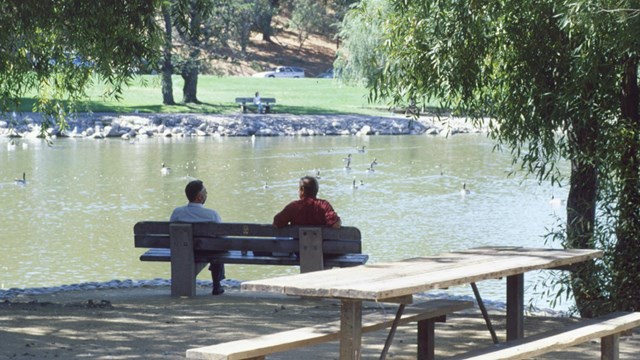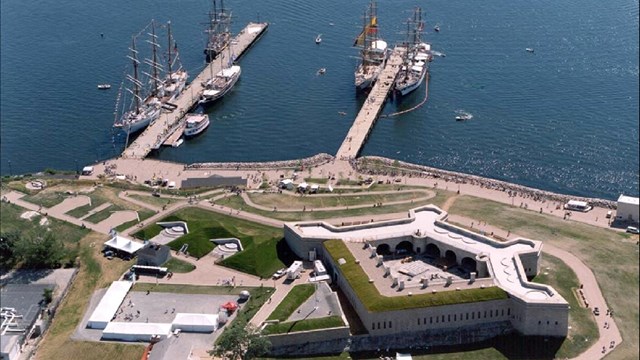Creating Local Parks and Recreation Since 1948
The National Park Service Federal Lands to Parks (NPS-FLP) program helps communities acquire, reuse, and protect surplus federal properties for local parks and recreation. States, counties, and local government may acquire surplus federal land and buildings no longer needed by the federal government at no cost on condition they are protected for public parks and recreation in perpetuity. Since its inception, this program has transferred approximately 190,000 acres of land to state and local governments for public parks and recreation use, enhancing close-to-home recreation opportunities nationwide.
Established in 1948 under Public Law 80-616, the NPS-FLP program is authorized to transfer surplus federal land to state and local governments for public park and recreation use. The program’s authority was later incorporated into the Federal Property and Administrative Services Act of 1949 (Public Law 81-152), as amended, which streamlined federal property management and created the General Services Administration (GSA) to oversee surplus land disposal. In 1970, the program was further strengthened by Public Law 91-485, which increased the public benefit discount to 100% of fair market value and permanently protected transferred lands for public use.
The program partners with communities seeking to acquire surplus federal property for parks and recreation by providing information on available surplus federal properties, assisting with the application process, advocating for public recreation, and facilitating the transfer of the property. Once NPS has an acceptable application from a local government, NPS-FLP requests assignment of the property from the General Services Administration (GSA). After conveyance, NPS-FLP maintains a long-term partnership with recipients to ensure the land remains dedicated to public park and recreation use forever.
In addition to the properties conveyed under the NPS-FLP, the program staff also have stewardship responsibility for former Recreation Demonstration Areas (RDAs) transferred to states in the 1940’s to ensure the RDAs remain protected and available for conservation and recreation.
The NPS-FLP program collaborates closely with other NPS offices, federal agencies, and state, local, and territorial governments to broaden access to parks and recreation benefits. To learn more, visit National Park Service Urban Programs.
By participating in the Federal Lands to Parks Program, communities throughout the nation have:
- Expanded park and recreational opportunities and amenities that enhance quality of life and revitalize neighborhoods
- Protected open spaces, extended hiking trails, and secured public boating and fishing access
- Preserved historical and natural resources such as forts and lighthouses, shorelines and wildlife habitat
- Transformed former military bases into vibrant recreational assets serving local communities
- Renewed a sense of community among neighbors through community gardens, senior and cultural centers, local parks, and other gathering places






